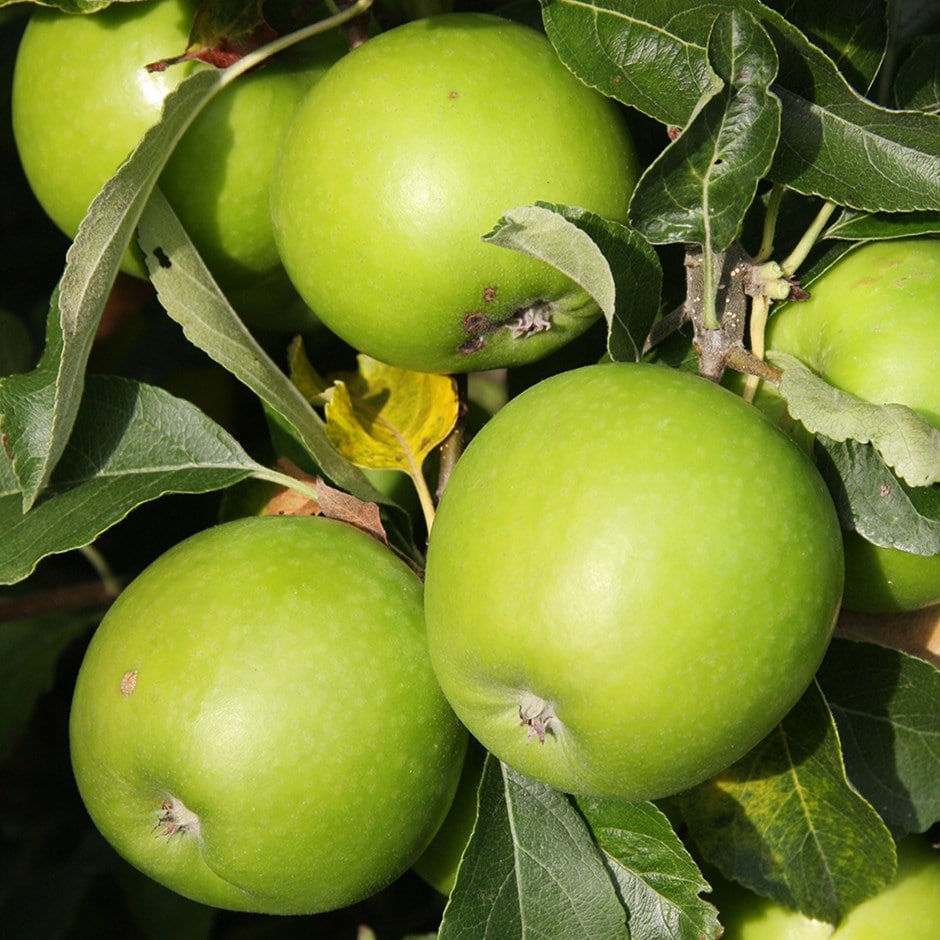apple 'Granny Smith'
eating / dessert apple
- 9 litre pot | M26 root stock | 1.2m
- £49.99
- available to order from late spring
Delivery options
- Standard £7.95
- Position: full sun
- Soil: moderately fertile, moist, well-drained soil
- Rate of growth: average
- Flowering period: April to May
- Hardiness: fully hardy
One of the best loved green apples, 'Granny Smith' is a late, self-fertile dessert apple known for its bright green skin and firm, refreshing white flesh. The fruit boasts a hard, firm texture, with its crisp, juicy flesh retaining a tart and acidic taste, and remains firm even when baked, making it a popular choice for cooking. Beyond its culinary uses, this popular cultivar offers beautiful blossoms in the spring and yields a heavy crop in autumn. With proper care, you can preserve the harvest to last you through the winter, making it a versatile and well-loved apple for eating raw or using in crumbles, pies, and jams.
Pollination information: This apple belongs to pollination group 3, and is partially self-fertile. To increase yields, it can be cross-pollinated with other apples in this group, or those from groups 2 or 4.
Pollination information: This apple belongs to pollination group 3, and is partially self-fertile. To increase yields, it can be cross-pollinated with other apples in this group, or those from groups 2 or 4.
When planting your apple tree, prepare a hole up to three times the diameter of its root system. Fork over the base of the pit in readiness, incorporating plenty of organic matter into the backfill and planting hole. Avoiding frozen and waterlogged soil, trees should be planted out as they arrive. If you've ordered a bare root tree, soak the roots in a bucket of water for half an hour prior to planting - or if this is not possible, they can be heeled in temporarily, covering their roots with soil, or potted up. Once in the ground, stake firmly and keep the base weed-free. Apply a balanced fertiliser in early spring to support growth and fruiting and provide regular watering during hot, dry spells. The main winter prune, avoiding frosty conditions, involves removing dead, dying, and diseased wood to create an open crown. Additionally, reduce leaders and laterals by a third to establish an airy structure without crisscrossing branches. In August, summer prune by shortening side shoots longer than 20cm (8”) back to three leaves, promoting fruit ripening and encouraging more fruit buds.
